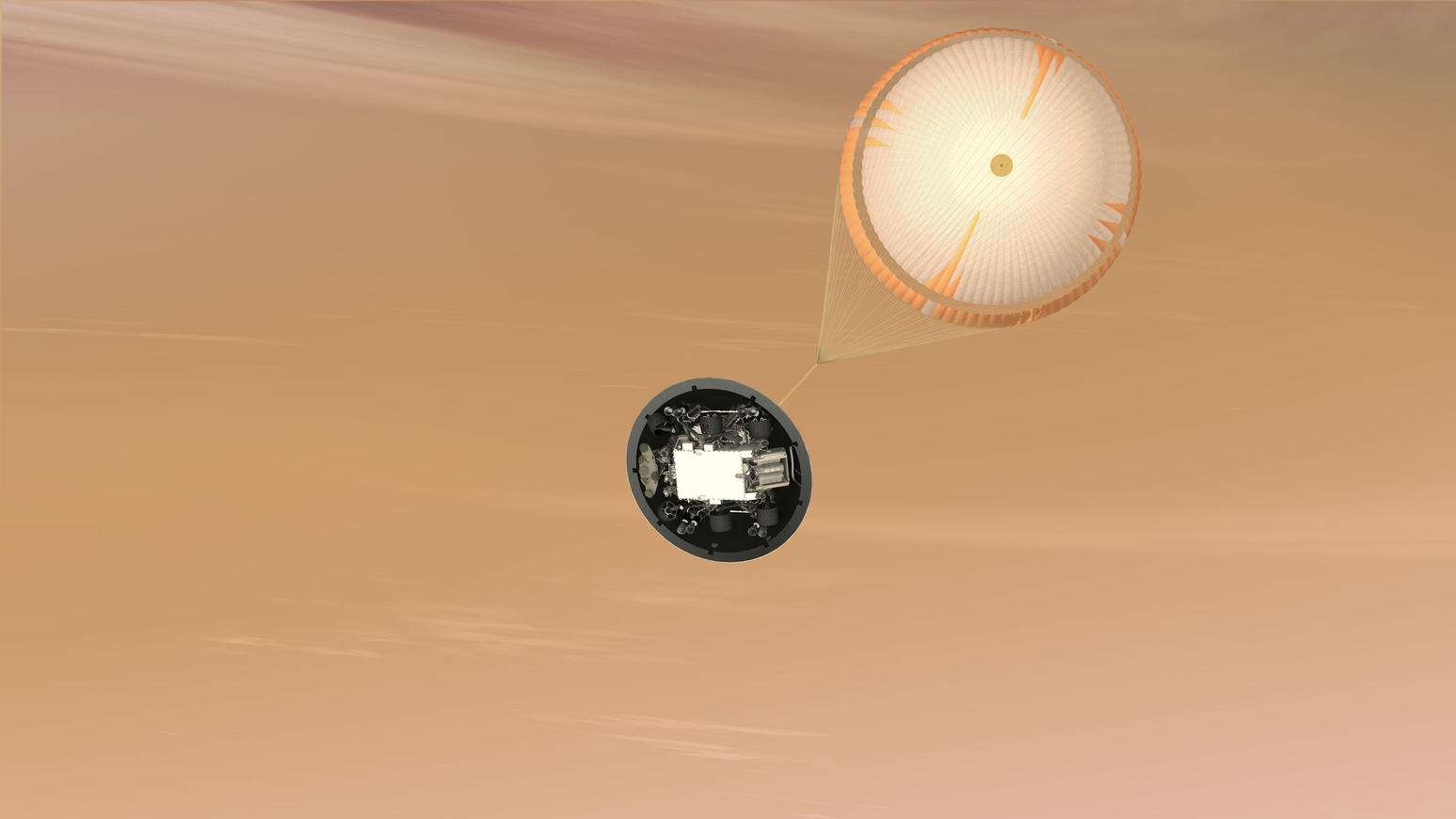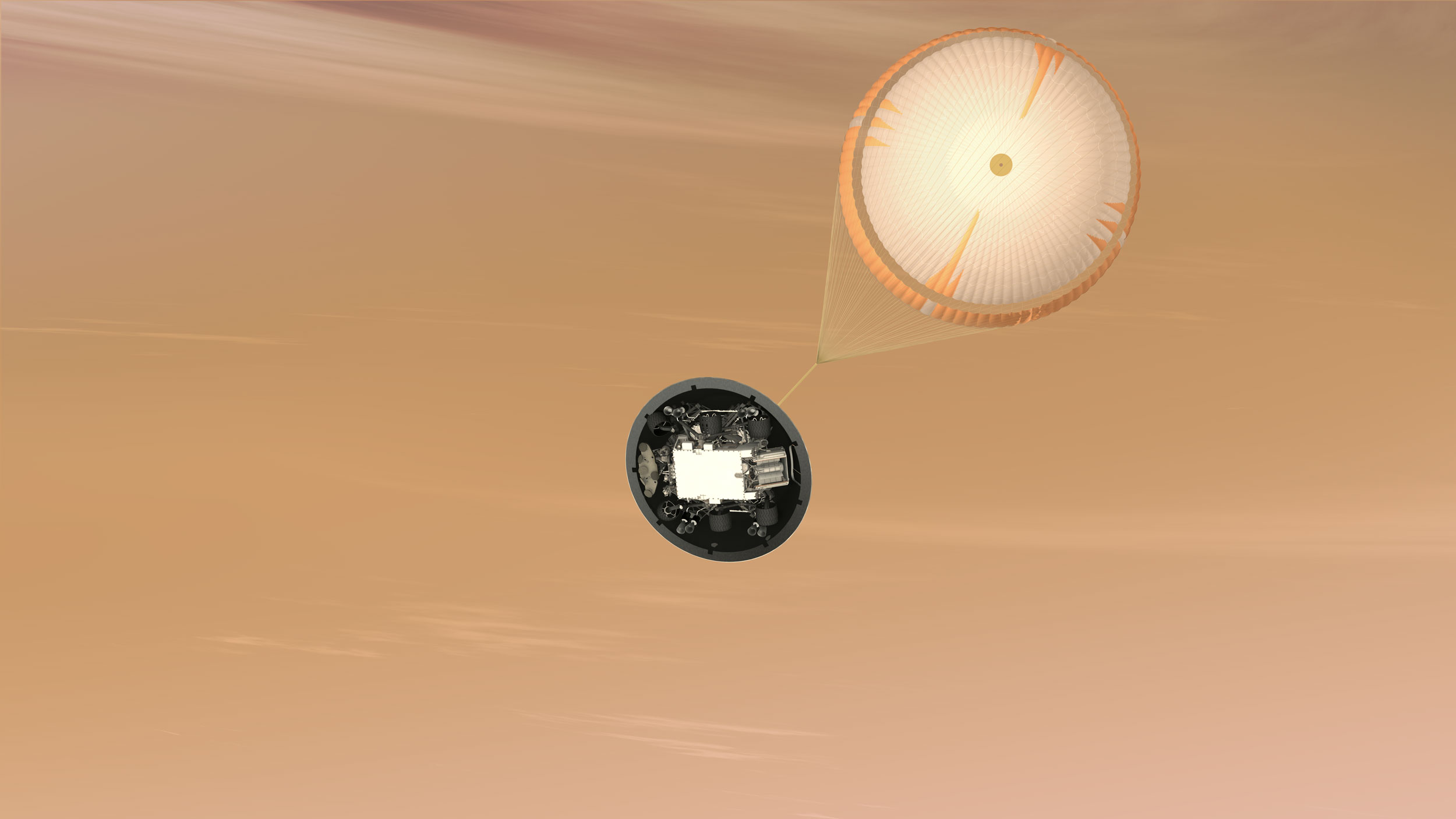Mars Science Laboratory Parachute, Artist’s Concept

| Credit | NASA/JPL-Caltech |
|---|---|
| Language |
|
This is an artist's concept of the Mars Science Laboratory Curiosity rover parachute system.
NASA's Mars Science Laboratory mission will use the largest parachute ever built to fly on a planetary mission. The parachute uses a configuration called disk-gap-band. It has 80 suspension lines, measures more than 165 feet (50 meters) in length, and opens to a diameter of nearly 51 feet (16 meters). The parachute is designed to survive deployment at Mach 2.2 in the Martian atmosphere, where it will generate up to 65,000 pounds of drag force.
The parachute is attached to the top of the backshell portion of the spacecraft's aeroshell. In the scene depicted here, the heat shield portion of the aeroshell has been jettisoned and the mission's rover, Curiosity, is visible tucked into the backshell. The spacecraft's descent stage is also inside the backshell. When the backshell drops away, a radar system on the descent stage can begin determining the spacecraft's altitude and velocity.
The Mars Science Laboratory spacecraft is being prepared for launch during Nov. 25 to Dec. 18, 2011. Landing on Mars is in early August 2012. In a prime mission lasting one Martian year (nearly two Earth years) researchers will use the rover's tools to study whether the landing region has had environmental conditions favorable for supporting microbial life and for preserving clues about whether life existed.
NASA's Jet Propulsion Laboratory, a division of the California Institute of Technology, Pasadena, Calif., manages the Mars Science Laboratory Project for the NASA Science Mission Directorate, Washington.
More information about Curiosity is at http://mars.jpl.nasa.gov/msl/ .

